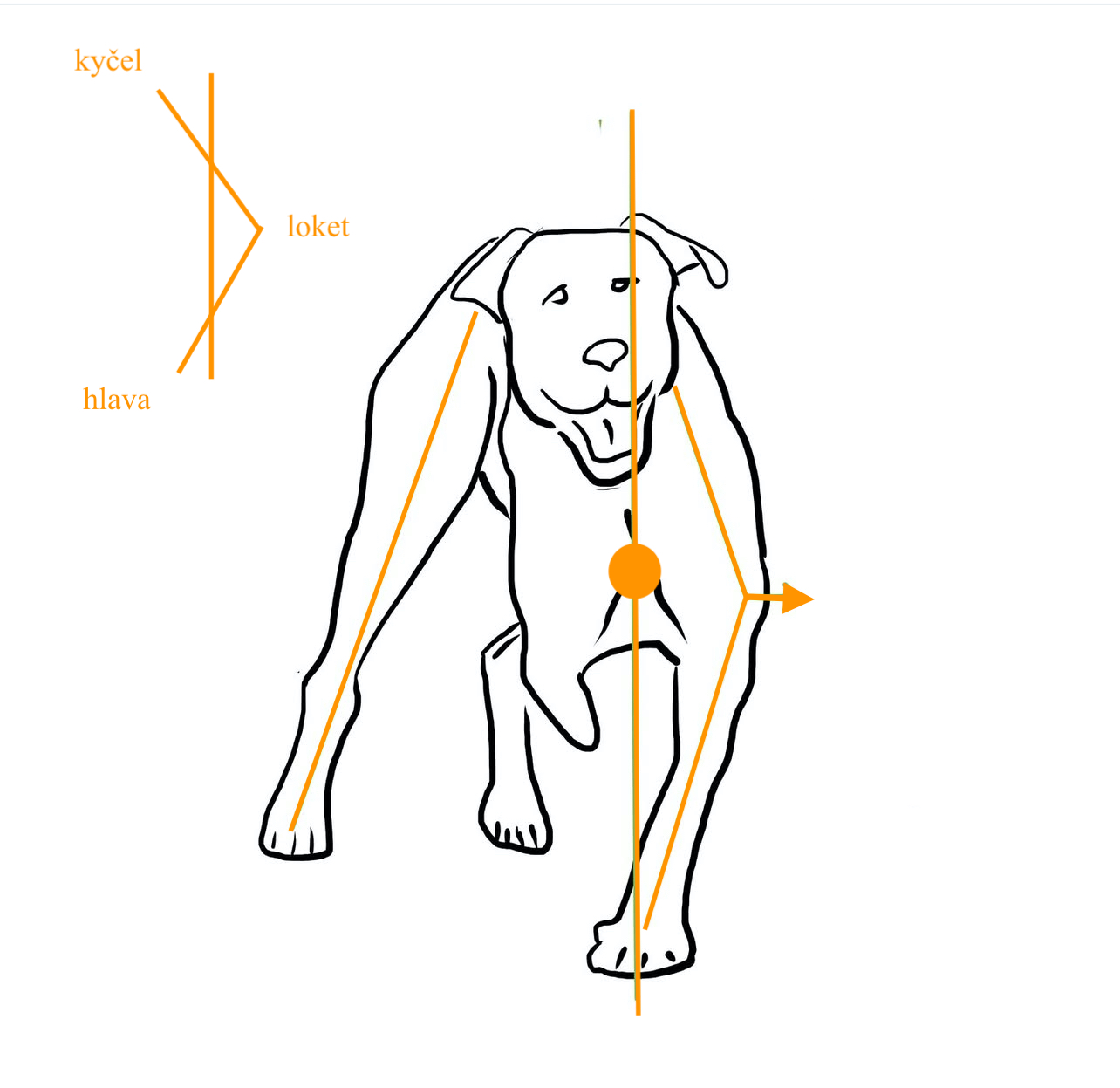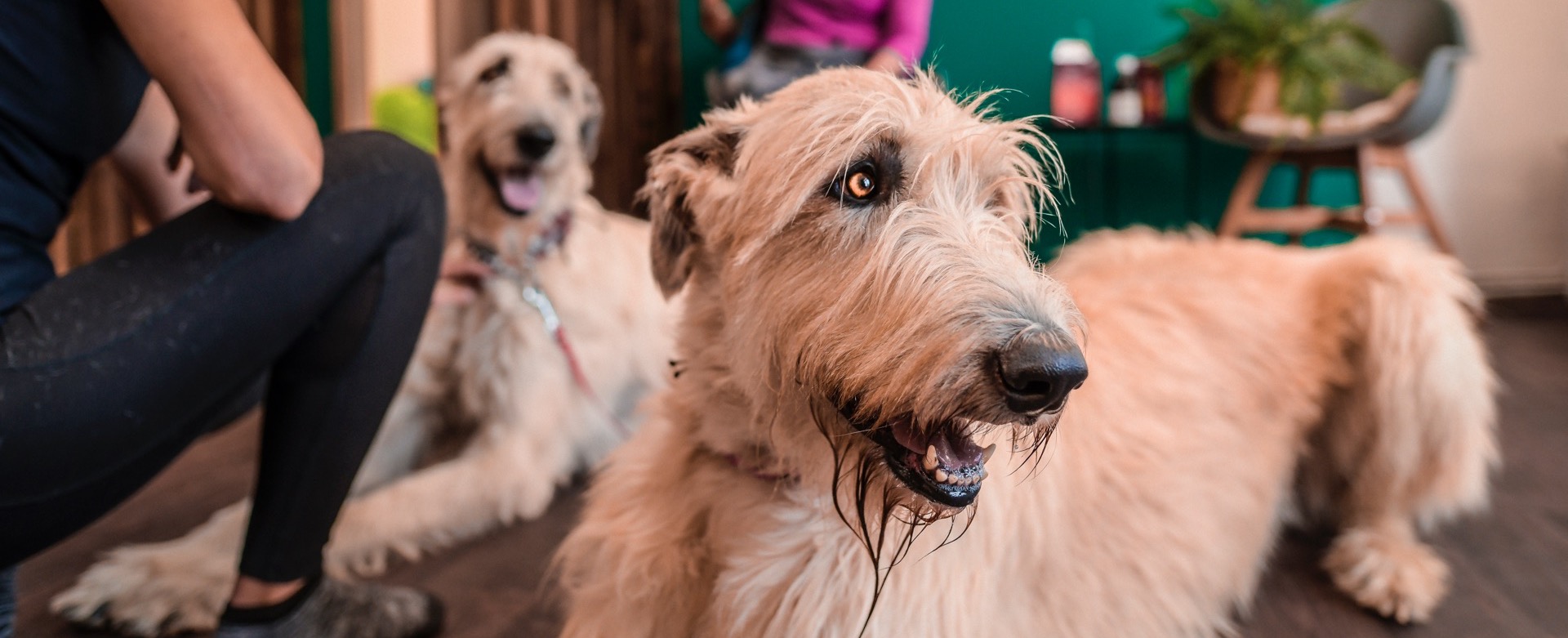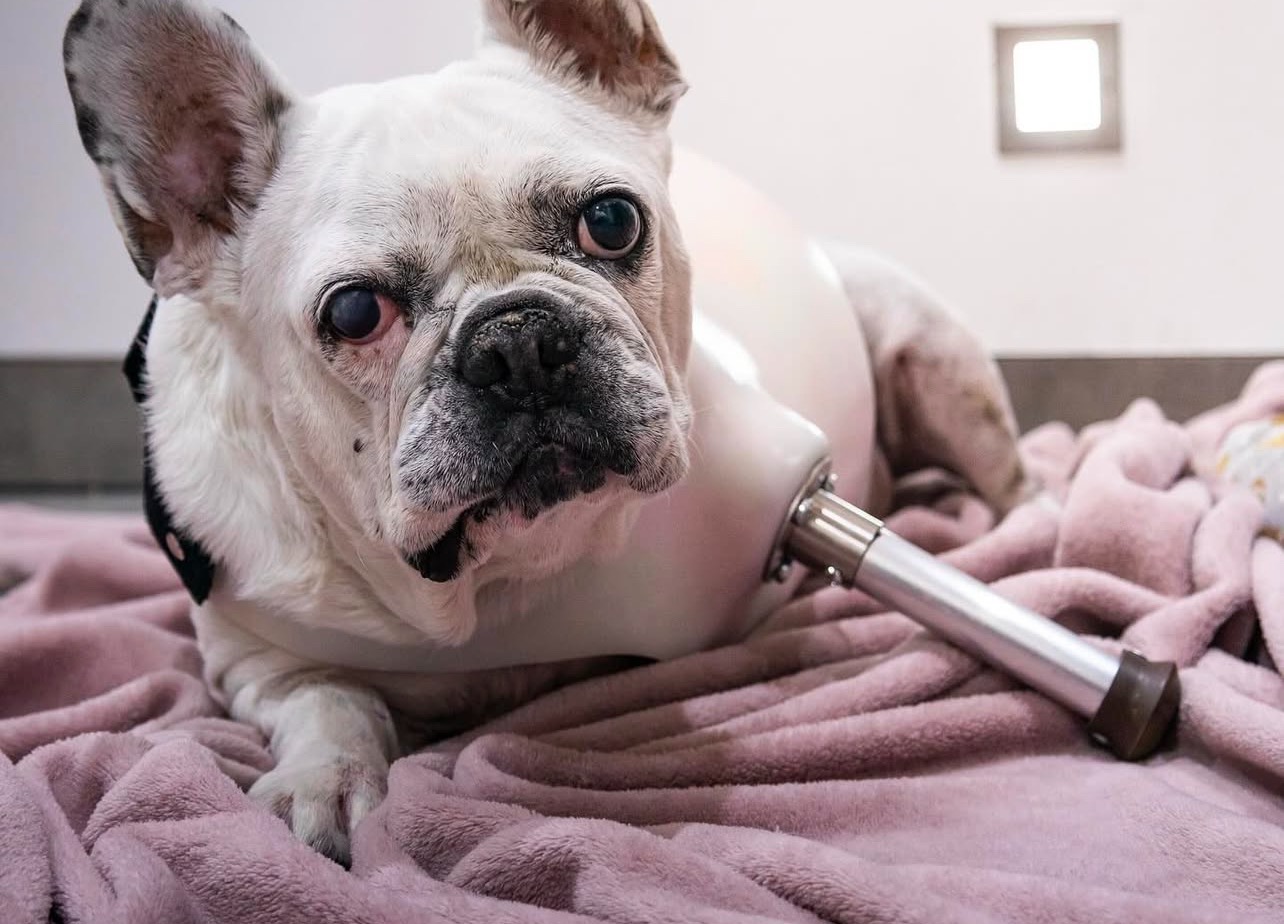Dogs After Front Limb Amputation: What Happens to Their Body and How Can We Help Them?
Front limb amputation is a significant change for a dog. Although it's often said that "the dog will manage," from the perspective of movement physiology and long-term health, it's not an ideal solution. A dog's body is not designed to function permanently on three legs—especially when one of the front limbs, which bear most of the body's weight, is missing.
In this article, we'll take a closer look at:
What natural movement looks like in a healthy dog
What happens in the body after a front leg amputation
What health complications can arise
And most importantly – how we can effectively help dogs after an amputation
How Does a Healthy Dog Move?
In a healthy dog, body weight is naturally distributed as follows:
About 60% of the weight is carried by the front part of the body
The remaining 40% is carried by the hind legs
The hind limbs serve as the dog's "engine" – all energy and movement should ideally originate from the back legs. The front limbs, on the other hand, play a crucial role in stabilization – they help absorb impact (for example, when a dog jumps down from the couch), and they distribute weight during standing and movement. Dogs also use their front legs to pick up objects from the ground and to change direction while moving.
When a dog loses one of its front limbs, the remaining front leg must immediately take on twice the load. That's why front leg amputation has far more significant biomechanical consequences than the loss of a hind limb.
Naturally, the body tries to adapt – but compensation comes at a cost.

What Happens in a Dog's Body After an Amputation?
When a dog loses one of its front limbs, it's not just their movement that changes. The entire mechanical setup of the musculoskeletal system shifts, and the dog must constantly work to maintain balance. The body tries to adapt, but that adaptation comes at the cost of overloading certain parts of the musculoskeletal system.
Shift in Center of Gravity and Load
After a front leg amputation, the dog's back arches and the center of gravity shifts forward, which places strain on the shoulder, elbow, and wrist of the remaining front leg.
After a hind leg amputation, the weight shifts forward onto the front limbs, which overloads the lower back and abdominal muscles.
Role of the Head and Spine
While walking and pushing off, the dog must work intensely with its head to maintain balance.
This leads to overloading of the cervical spine and neck muscles. Meanwhile, the hind legs must ensure propulsion and forward movement, putting additional strain on the back muscles.
Finding Balance While Standing
A dog after amputation cannot stand perfectly straight. It tends to tilt its head toward the side of the missing limb, and the elbow splays outward, leading to uneven stress on the joints.
The back curves into an arch, which results in asymmetric overloading of the spine.
The hind leg on the amputated side must rotate outward to help balance the missing front support. This, however, leads to overloading of the hip and knee.
The Wrist Suffers Most
The wrist of the remaining front leg is under extreme stress—during standing, walking, picking things up from the ground, and getting up.
This often results in collapse of the wrist (hyperextension) and, over time, arthritis, pain, and other injuries.
All of these issues may appear subtle at first—such as fatigue, reduced willingness to move, or mild limping. But over the long term, these changes can significantly affect the dog's quality of life.
Myth: "Small Dogs Cope Better"
It's a common belief that small dogs—like Chihuahuas—handle amputation more easily than large breeds. It's true that a smaller body weight means less absolute load, but biomechanical principles apply equally to all dogs. Every dog's body, regardless of size, must respond to asymmetrical loading and the absence of support.
So yes—a Chihuahua might keep running as if nothing happened. But its cervical spine or the wrist joint of the remaining limb can wear out just as quickly as in a Labrador—sometimes it just takes longer for the problems to become visibly noticeable.
What Can We Do to Improve a Dog's Quality of Life After Amputation?
The good news is that with modern assistive devices and proper care, we can significantly relieve dogs after amputation and help them move without pain and without overloading their bodies.
- Prosthetic for the Missing Limb: A prosthetic helps restore partial balance and allows the dog to use a "fourth leg" as support while standing and walking. The weight is more evenly distributed, and the body is no longer forced into extreme compensation.
- Orthosis for the Healthy Front Leg: Protects the joint structures—especially the wrist (as well as the shoulder and elbow)—which are under tremendous strain after amputation. The orthosis helps prevent inflammation and the development of arthritis.
- Regular Physiotherapy and Rehabilitation: Professional physiotherapy helps release tight muscles and joints, strengthen stabilizing muscles, and improve posture. It's ideal to begin as early as possible after the amputation—prevention is always better than treating pain later.
- Individual Rehabilitation Plan: Tailored to the dog's size, breed, and physical condition.
Help Your Dog Move Without Pain
Amputation doesn't have to mean the end of a good quality of life. But walking on three limbs is not natural for a dog—whether it's a small pet or a large athletic breed. Long-term overload can lead to pain, limited mobility, and even mental stress.
With individualized solutions such as prosthetics, orthotics, and physiotherapy, we can help the body regain its balance—and give the dog a full, happy life.
Do you have a dog who's undergone amputation? Need help choosing the right device or finding a qualified physiotherapist?
Contact us—at Animal Prosthetics, we're here to help dogs with disabilities get back on their feet.
Written by: Stephanie Mach, CCBW, CCRP (Veterinary Physiotherapist, CEO of Animal Prosthetics)


